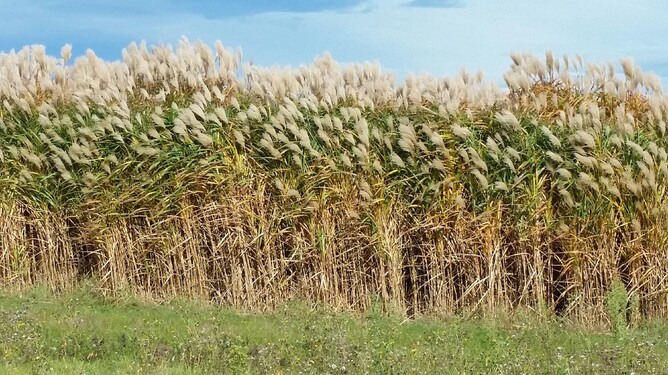Researchers in Germany are looking at ways beyond meat, grain or dairying for farmers to grow and profit from in future.
On a 200-hectare farm at Meckenheim, 15km south west of Bonn, scientists are investigating how plants can be used for everything from biofuel, to building materials, paper and medicine.
The University of Bonn’s Dr Thorsten Kraska says plants such as virginia mellow, cup plant, princess tree and jerusalem artichoke can all be used for multiple purposes before being burned as biomass.
These crops can play a key role in sustainable farming in the future because they have multiple uses.
Kraska told journalists visiting the farm as part of the International Federation of Agricultural Journalists 2016 Congress the miscanthus plant excited him the most.
From the grass family, the plant had more than 30 different uses, including animal bedding, soil substitution, fuel and as a building industry material. Burning it should always be its final use.
“Don’t use your biomass plant just for energetic purposes. It should be for a material use and then later on, when you can do nothing else, then you can burn it.”
Miscanthus had a low 1:15 parts energy input to output ratio. In comparison, rape seed and maize plants had an energy input to output ratio of 1:3 and a maximum of 1:5.
It could grow more than two metres high and would overgrow nearby weeds, eliminating the need for herbicide, he said.
“It can grow up to five centimetres a day when the conditions are right. In mid-summer now, in July, we can make a measurement in the morning and in the afternoon and find clearly that the plant is growing.”
Soil fertility also increased after miscanthus was grown because it was largely a hands-off crop. No chemicals were sprayed because the plant took care of any weeds and attracted few insect pests. It needed to be harvested once a year in early summer and required about 30kg of nitrogen every second year, he says.
Miscanthus’ roots were able to fix nitrogen and those varieties that did not utilise its leaves when harvested returned about eight tonnes of organic matter to the soil when its leaves were broken down.
About five tonnes a year of CO2 was also sequestered in the soil and 30 tonnes was sequestered in the air from an average yield per hectare, he says.
Kraska estimates biomass plants could substitute about one million litres of oil currently used by farmers within a 15-kilometre radius of the research farm to remove unwanted biomass.
Miscanthus came in different varieties, with differing stem to leaf ratio and biomass potential.
Those with a higher leaf to stem ratio were less efficient for combustion because the leaves contained minerals that might corrode the inside of the oven.
But these varieties were ideal for building materials because the leaves contained a high level of silica. The stems were ideal for insulation.
“We are looking at very different varieties, and I get the feeling we are just at the beginning.”
The variety planted at the research farm is a sterile miscanthus spread by re-planting its rhizome – the stem that keeps growing, sending out roots and shoots from its nodes.
Worldwide, miscanthus yielded about 20 tonne a hectare on average, although he was aware of regions growing 40T/ha and 10-12T/ha in colder climates.
But taking it from the laboratory to the farm posed challenges in Germany, where there was no large-scale market for it. All current plantings were on a small scale, with no associated industry in support.
It was a long-term investment and commitment for a farmer with no guarantee of a committed buyer for harvesting, Kraska said.
“For miscanthus, they have to stand for three years before you get the full yield and you have to spend roughly €2000 per hectare ($NZ3000) on planting material because there are no seeds available.
“So for the first three years, they are not making money out of it. You have to grow it at least 10 years for it to be successful on an economic scale.”
This was the main reason growing large scale miscanthus crops was not popular in Germany, where miscanthus stands were on a small scale and the plant was used as fuel for domestic heating or bedding material for livestock.
All farms had areas unsuitable for cropping but suitable for miscanthus. On hillier farms, it could be used to control erosion.
“The rule for miscanthus is that if you can grow any crop, you can grow miscanthus and when you have a hilly area it might be better because it has stable roots and rhizomes and can withstand [rain and flooding] there and avoid soil erosion.”
Despite the challenges, he sees huge potential for the plant in German agriculture. “The funny thing is that it’s potential has been known for 10-20 years.”
——————————————————————————
View full article (written September 2016) by Gerald Piddock at https://www.stuff.co.nz/business/farming/83171242/multipurpose-plant-has-big-future-in-germany-and-new-zealand


